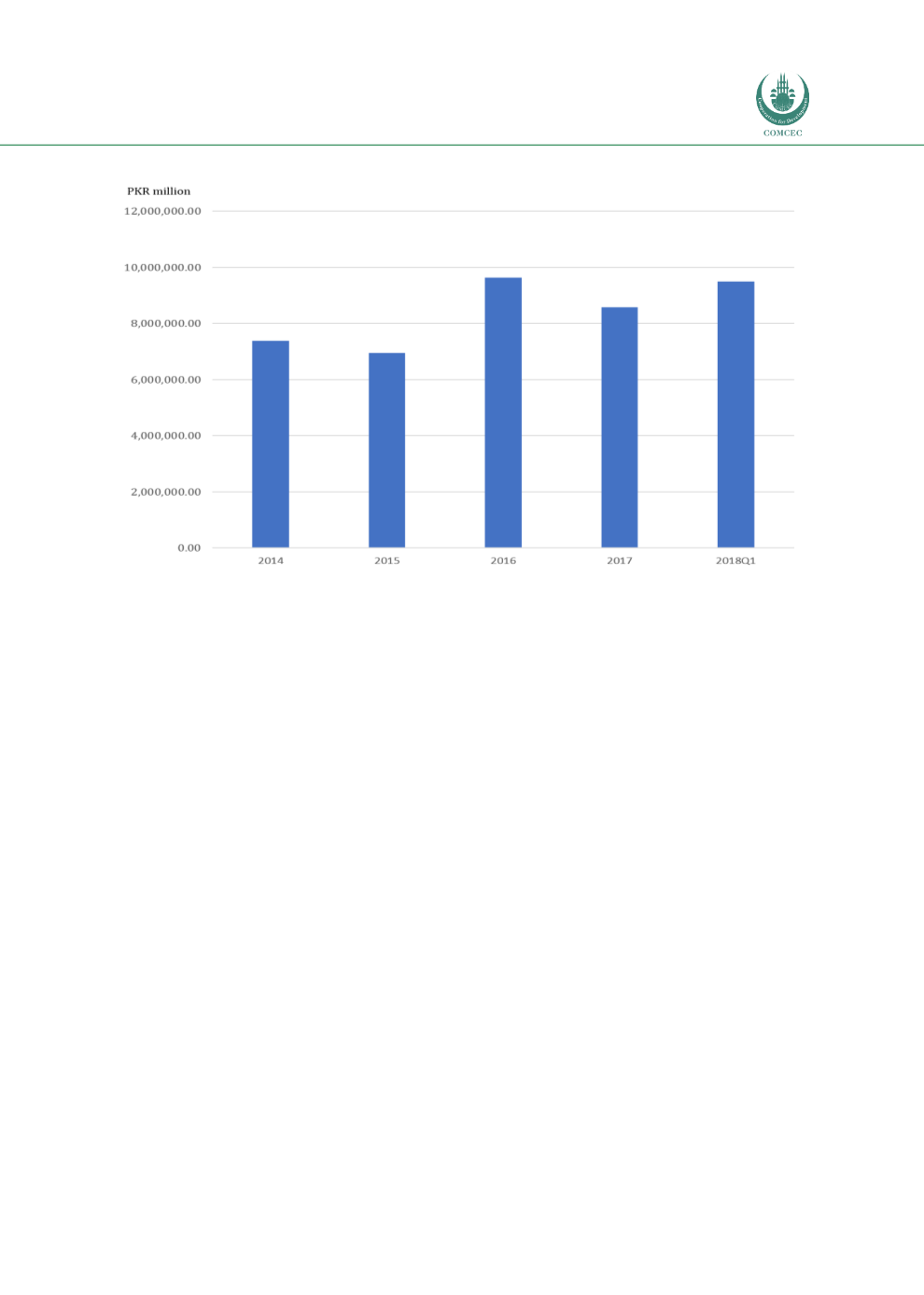

Islamic Fund Management
115
Chart 4.15: Total Market Capitalisation of the PSX (2014−1Q 2018)
Source: Pakistan Stock Exchange
Tax Framework
Although investors enjoy some tax relief when investing in funds, this is still limited, as
described earlier in
Table 4.13 .No tax incentive is provided to AMCs offering Islamic funds or
at the fund level. Both conventional and Islamic funds are treated the same. This is different
from the Malaysian experience, where some tax benefits are given to fund managers to
incentivise them to develop more Islamic wealth-management products (refer to
Table 4.5 : Tax Incentives for the Malaysian Fund Management Industry ).
Demand Side
Retail investors:
Pakistan has a large untapped Muslim population that remains out of the
financial system. Pakistan’s population numbers about 200 million, and the vast majority of
them are Muslims (about 95%-98%). Nonetheless, the financial inclusion rate for Pakistan is
significantly lower than its peers’. Based on the SBP’s Access to Finance Survey 2015, about
53% of the population are financially excluded while 24% have access to informal financial
services such as cooperatives and local committees, and loans offered by shopkeepers and
others. Only 23% have access to formal financial services (banks: 16%; NBFCs and national
savings schemes: 7%); a clear majority of them live in Karachi, Lahore and Islamabad. The
capital market presence and outreach are limited to these three main cities (SECP, 2016).
Accordingly, the government, spearheaded by the SBP, has launched the NFIS (2015-2020) to
provide a comprehensive framework and roadmap for priority actions to increase access to
and the use of quality financial services.
Box 4.5 provides an overview of the NFIS and its
current progress in driving the growth of Islamic funds, particularly the introduction of Digital
Transaction Accounts (DTAs)―mobile account scheme―in rural areas. This initiative facilitates
















